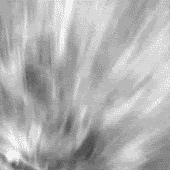The Architecture of Consciousness
The human mind is powerful beyond measure. Much about it remains unknown. One can only speculate on the potential that resides there – on the seat of human consciousness. This is a very intriguing place. Generally speaking, the mind is where the objective and the subjective meet. There is no conceivable end to the imagination, thus this material can be explained and realized thousands of different ways. However, only one path is necessary. There are not many certainties found through the study of psychology, but it offers an excellent apparatus of ideas, or, tools for understanding. The cerebral expanse is sort of software dependent upon material faculties. Nerves, eyes, ears, taste buds, and the nose serve as the corresponding hardware. Visual, spatial, auditory and other means of stimuli are gathered through these sensory faculties and transmitted to the brain as raw data for interpretation. The information is then rapidly processed in a categorical format at first, then it is subjected to perceptual conception. This is the brain’s direct link to phenomenal extrapolation; thus, providing a grounds for objectivity. The mind experiences subjective degrees of separation upon its interpretation, that can be contributed to a number of extrinsic and intrinsic variables.
Five Sense Data Extrapolation and Perceptual Consistency:
The quality of information gathered through the senses varies by species as defined by its acclimation to circumstantial criteria. Canines are able to hear noises for miles in all directions and display an equally keen capacity for smell. Dolphins are extremely sensitive to complex networks of sonic vibrations. Osprey have developed eyes equipped to monitor detail over vast expanses. In comparison, the human species is hardly competitive aside from their cognitive abilities, of course. Sensory receptors convert sights, smells, sounds, skin sensitivity, etc. into neural impulses in order to conduct electrochemical reactions throughout the brain. Like a factory, the signals travel to their respective areas of the brain in the its own unique form of communication. Neurons pulse through neural pathways, delivering input and submitting for analysis. Through a process known as sensory adaptation, the brain creates a balanced comprehension of its surrounding environment, establishing parameters and estimating variables – drafting a working map.
Gestalt psychologists hold that though sensory receptors conceive a surrounding environment in its entirety, it would be impossible for the brain to process every bit of information at once. The data must be dissected and interpreted independently of the whole mass. The stimuli is then sent to its respective area of the brain for analysis. Then, the various areas of the brain cumulatively form a reality map to determine the body’s relative position in space and frequencies established through other sensory data. According to Gestalt psychologists, the material is defined by certain principles known as figure-ground, similarity, proximity, continuity, and closure. Extending from these same codes, perceptual consistencies gauge the changes in sensory scope of bodies in motion.
Perceptual consistencies are likely to falter when sensory data introduces an unknown stimuli, and in effect, causes a perceptual distortion of sorts. At times, perception calculates for illusions – or, a misrepresentation of physical reality. Primarily, humans maintain similar perceptual consistencies on a global scale. However, some studies have shown that there are cross-cultural variations, or – marked differences in perceptual assimilation. At first, the deviations were thought to be biological. Though, further testing revealed that cultural influence played the primary causal role. [Pederson and Wheeler (1983)]
The results of the studies brought into question other deterministic factors concerning perceptual organization and cross cultural consistency (later discussed via Jung‘s archetype). Studies, though still conducted, eventually led to the conclusion that perceptual identities are experienced differently by various cultures and individuals. Some factors are biological, or genetic, but differences are more commonly environmental in origin. From this point forward, perception grows increasingly complex for some…increasingly simple for others. The level of complexity is determined by individual capability and/or potential allied by particular factors. Naturally, knowledge affects perception. For example, previous experiences may enhance stimuli, create false expectation, and/or evoke reflexive behaviors. Perceptual sets are natural adaptations to reality – predetermining an experiential schema. These sets are comprised of familiar environmental and cultural associations. Perceptual sets may significantly effect behavioral patterns and situational outsets. Social perception is largely based on the same concepts aside from the fact that our brains exhibit different operational patterns for social interaction. Complicated facial features and social customs cause the brain to categorize stimuli differently. The brain reacts from a designated core in order to interpret and reciprocate the multitude of subtleties and nonverbal codes involved with human interaction, molding the many pieces of a consciousness, or, a conscious awareness.
Human perception is a mere facet, or product, of consciousness. Consciousness consists of every waking aspect of experience. Sounds, vibration, temperature, thought, bodily health, mental health, equilibrium, the steady flow of information gathered by receptors, among other conscious processes all design the architecture of consciousness. Waking consciousness is, by itself, a scientific marvel. Yet, not much is known about what constitutes the primary production of consciousness. There are many ideas on the subject, and a myriad of fragile hypotheses shrouding any type of theory.The foundation of the mind is commonly referred to as the sub-conscious, or unconscious. Early psychologists frequently discussed this concept – mainly in speculation. However, there were some breakthroughs thanks to psych fathers; Sigmund Freud and Carl Jung. Long story short – Freud hypothesized that certain adult onset behavioral issues could be traced to childhood development. Jung worked on a much more complex body of ideas concerning the subconscious mind. Carl Jung originally developed the concept of the archetype – or, universal subconscious personalities and/or traits linked to cultural figures/characters outlining the human condition in its entirety. If perception is a cultivation of sensory consistencies, then Jung’s archetype would represent culturally consistent manifestations of personality throughout the span of human existence. That is, certain reoccurring personality types were theorized to be prevalent in every society, culture, and stage of human development. However, generalizations aside, there are as many different personalities as there are people in existence. Ultimately, it is often concluded that a person’s identity is the sum of his or her beliefs.
What is belief, exactly?







